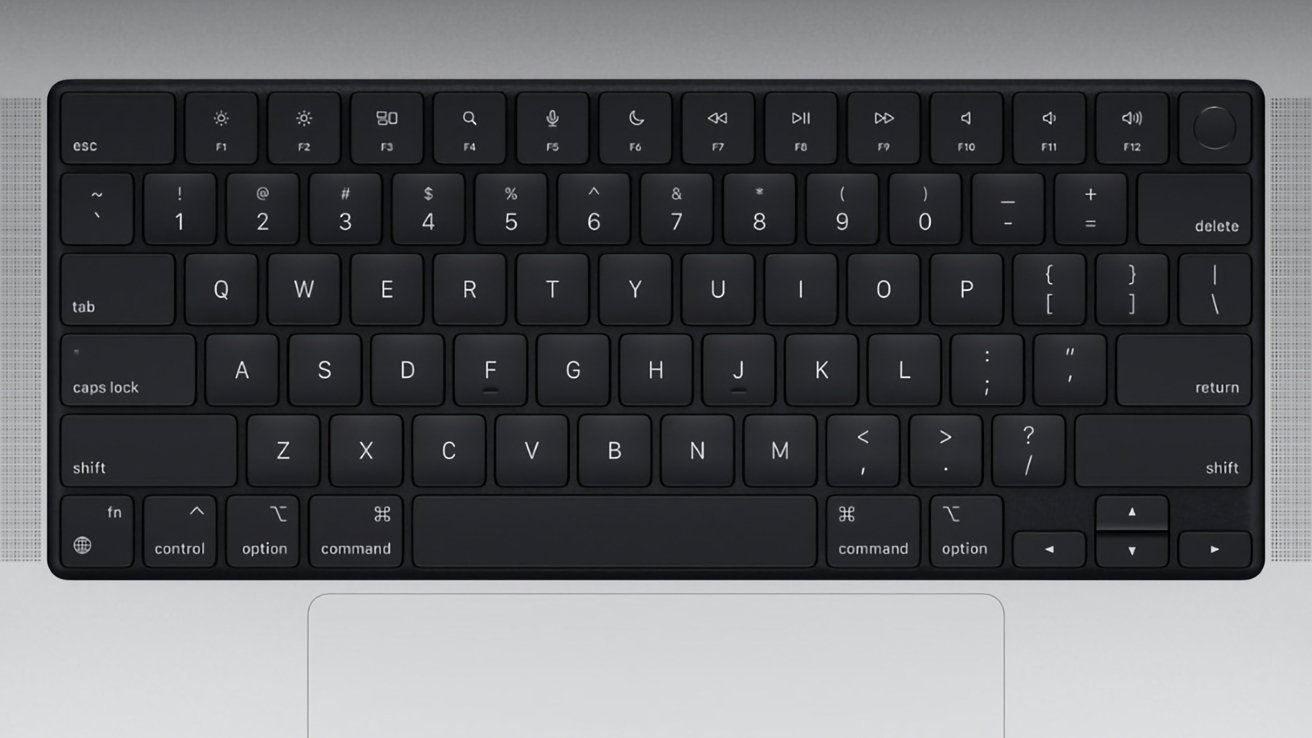Apple is exploring innovative keyboard designs for future MacBook models, focusing on integrating customizable aluminum keys that can dynamically display various symbols and characters. This concept is detailed in a recent patent filing, suggesting a significant evolution in keyboard functionality and aesthetics.
Innovative Design and Material Integration
Traditionally, MacBook keyboards feature plastic keycaps with fixed symbols. Apple’s new approach envisions keycaps crafted from aluminum, aligning with the MacBook’s unibody design for a seamless and uniform appearance. When the device is powered off, these keys would appear blank, devoid of any visible markings, enhancing the minimalist aesthetic.
Dynamic Display Capabilities
Upon activation, each key would illuminate to display the necessary characters or symbols. This dynamic presentation is achieved through precisely engineered perforations in the aluminum keycaps, allowing light from underlying mini-LEDs or similar backlighting systems to project through. This method ensures that only the intended glyphs are visible, eliminating light bleed around the edges and maintaining a clean, focused display.
Enhanced Functionality and User Experience
The adaptability of this keyboard design offers several advantages:
– Language Versatility: Users can switch between different language layouts effortlessly, with keys displaying appropriate characters as needed.
– Contextual Adaptation: Depending on the application or task, keys can change to display relevant symbols, emojis, or function keys, enhancing workflow efficiency.
– Durability: Aluminum keycaps are more resistant to wear and tear compared to traditional plastic keys, potentially extending the keyboard’s lifespan.
Technological Distinction
It’s important to note that this technology differs from existing solutions like the Stream Deck, which utilizes miniature displays for each key. Apple’s design focuses on low-resolution displays that project specific glyphs through the keycaps, offering a balance between functionality and simplicity.
Historical Context and Future Implications
Apple has a history of experimenting with keyboard designs, such as the aluminum keycaps on the PowerBook G4. However, those featured static markings. This new patent indicates a move towards more dynamic and customizable input methods, reflecting Apple’s commitment to innovation.
While patent filings don’t always result in commercial products, this development suggests that future MacBooks could offer users a more personalized and adaptable typing experience, potentially setting a new standard in laptop keyboard design.



